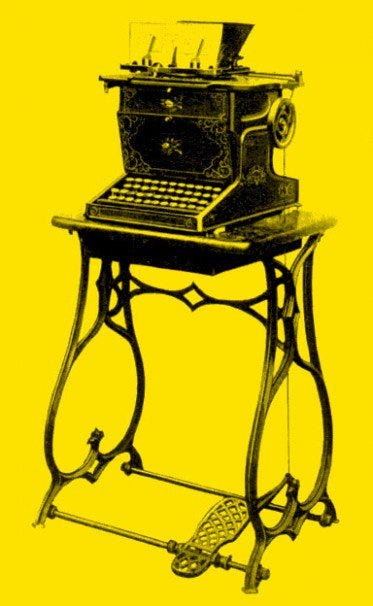
It’s one of the oddest peculiarities in the world. WHY do we use QWERTY keyboards that seem randomly assign letters on a keyboard. (Why is “A” – one of the most used letters associated with our weakest digit for instance?)
QWERTY’s Quirky History
Part of the answer is inertia. The large, clunky keyboard is what you learned to type with, as did your parents and your grandparents (and maybe even your great-grandparents). It’s comfortable; Kevin Weaver, an assistant clinical professor of physical therapy at New York University, says that at this point most of the potentially bothersome ergonomic issues have been designed out of it.
“We’re stuck in a cycle,” says Frank Jones, an assistant professor of computer science at Brigham Young University and a creator of a finger-tracking touch-screen keyboard called DotKey. “We teach kids how to use QWERTY because it’s everywhere. Why is QWERTY everywhere? Because we teach kids to use it.”
This wasn’t always the case. Early typewriters included all kinds of creativekey layouts and arrangements. But the one that stuck was the Sholes & Glidden Type-Writer, developed largely by Wisconsin journalist and inventor Christopher Latham Sholes, and sold by firearms maker E. Remington & Sons starting in 1874.
The Sholes & Glidden became the first popular typewriter, and it had a key format nearly identical to the QWERTY one we use today. It typed only in capitals, though, so reading Sholes’s early letters gives the impression that he’s shouting at the recipient.
It’s not clear how Sholes came up with the key arrangement, featured in an 1878 patent, though theories abound. But he was trained in the printing industry and was a newspaper publisher, so he would have been familiar with how typesetters organized their trays of letters by frequency of use.

In 2011, Kyoto University researchers proposed that QWERTY stemmed from key rearrangements made to satisfy the habits of the typewriter’s earliest customers: telegraph operators, who used it to transcribe Morse code messages. (For instance, some letters that are often confused for one another in Morse are close together on the keyboard.) Those researchers were challenging the oft-invoked bit of folklore that QWERTY was chosen to prevent typewriters from jamming when people hit commonly used letters in quick succession. Either way, in 1893, several of the largest typewriter makers combined to form the Union Typewriter Company. By the turn of the century, QWERTY was the typing standard.
After that, it wasn’t long before children started learning QWERTY. These days, US kids are required to be able to type with a keyboard by third grade, and some schools are teaching kids as young as kindergarten basic keyboard skills.
QWERTY dominates not just in countries that use alphabets (with someregional variations), but in countries like China that developed their own systems, such as Pinyin, to type a vast array of characters with the same simple keyboard.
But the QWERTY keyboard’s success has not been due to lack of competition.
The Contenders…
Read about cool inventions that might eventually change our keyboard from gloves to mind reading at: Source: Why We Can’t Quit the QWERTY Keyboard – MIT Technology Review – Medium
